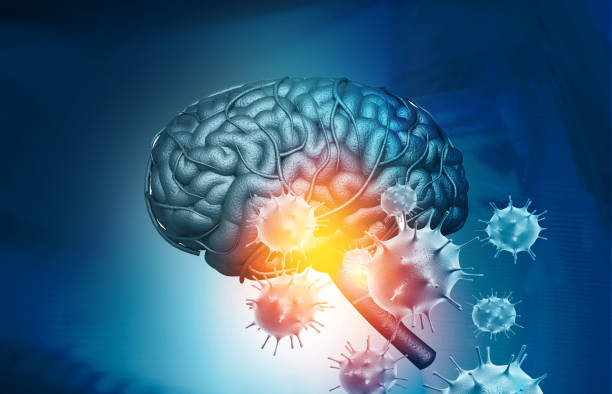- New lithium compounds could halt, reverse disease
Lithium is a naturally occurring element in the brain, playing a significant role in the normal functioning of the organ at its limited but standard measure. While Nigerian medical scientists are battling with the challenges of lithium prescription for the purpose of tackling bipolar disorders in the country, a team of scientists at Harvard Medical School have at the same time uncovered the fact that lithium depletion caused by amyloid plaques binding to it, triggers early brain changes that lead to memory loss. PharmaTimes Editor, MORGAN NWANGUMA writes that in the course of their research, scientists found that feeding healthy mice a lithium-restricted diet brought their brain lithium levels down to a level similar to that in patients with Alzheimer’s disease.
Harvard Medical School scientists have uncovered a surprising culprit in the origins of Alzheimer’s disease: the brain’s natural lithium supply. Their decade-long study, published August 6 in Nature, reveals that lithium depletion, caused by toxic amyloid plaques binding to the element, may be one of the earliest sparks that drives memory decline.
For the first time, researchers have shown that lithium occurs naturally in the brain, where it helps protect against neurodegeneration and supports normal function across all major brain cell types. When lithium levels drop, brain ageing accelerates and the risk of Alzheimer’s rises.
To test whether this loss could be reversed, the team designed a new class of lithium compounds that evade plaque capture. In mice, these compounds restored memory and repaired Alzheimer’s-like brain damage, at doses far lower than those used in psychiatric medicine and without toxic side effects.
A quick look:
- Lithium is essential for normal brain function and resilience against ageing and Alzheimer’s.
- Amyloid plaques deplete lithium in the brain, revealing a new mechanism for how Alzheimer’s may begin.
- Novel lithium-based compounds restore memory and reverse brain damage in mice without toxicity.
This breakthrough helps explain decades of puzzling observations: why some people with hallmark Alzheimer’s changes never develop dementia, and why amyloid-targeting drugs have offered only modest benefits.
By positioning lithium loss as a root cause, the research offers a unifying theory for Alzheimer’s, along with fresh strategies for early diagnosis, prevention, and treatment.
With over 400 million people worldwide affected, these findings may mark a turning point in tackling one of medicine’s most stubborn mysteries.
“The idea that lithium deficiency could be a cause of Alzheimer’s disease is new and suggests a different therapeutic approach,” said senior author Bruce Yankner, professor of genetics and neurology in the Blavatnik Institute at HMS, who in the 1990s was the first to demonstrate that amyloid beta is toxic.
The study suggests lithium could one day be used to treat Alzheimer’s in its entirety, rather than targeting just one hallmark of the disease such as amyloid beta or tau.
A key discovery was that, in the early stages of dementia, amyloid beta deposits bind to lithium in both humans and mouse models. This binding depletes lithium in the brain, disrupting its protective functions across all major brain cell types. In mice, this depletion triggered Alzheimer’s-like changes, including memory loss.
To counter this, the researchers developed a class of lithium compounds designed to evade amyloid beta. The most promising, lithium orotate, reversed Alzheimer’s-like brain damage in mice, prevented cell injury, and restored memory.
While these findings still need to be tested in humans through clinical trials, they suggest two important possibilities: that lithium levels could serve as an early biomarker for Alzheimer’s, and that amyloid-evading lithium compounds could become a new form of treatment or prevention.
Current lithium medications for mood disorders are given at much higher doses that can be toxic, particularly in older adults. By contrast, the Harvard team found lithium orotate to be effective at one-thousandth of that dose—matching the brain’s natural lithium level. Even when given to mice throughout most of their lives, the treatment showed no signs of toxicity.
“You have to be careful about extrapolating from mouse models, and you never know until you try it in a controlled human clinical trial,” Yankner said. “But so far the results are very encouraging.”
Lithium reduction signals Alzheimer’s onset
Yankner’s interest in lithium began while studying the neuroprotective protein REST. But determining whether lithium naturally exists in the human brain—and whether its levels shift during neurodegeneration, required access to brain tissue, something impossible to collect from living people.
To overcome this, the lab partnered with the Rush Memory and Ageing Project in Chicago, which maintains a vast collection of postmortem brain tissue donated by thousands of participants spanning the full spectrum of cognitive health. This breadth was crucial. “Studying a brain in the late stages of Alzheimer’s is like looking at a battlefield after a war,” Yankner explained. “There’s so much damage that it’s hard to see how it all began. But in the early stages, before the brain is badly damaged, you can get important clues.”
Led by first author Liviu Aron, senior research associate in the Yankner Lab, the team used a highly sensitive form of mass spectrometry to measure trace amounts of about 30 metals in brain and blood samples. The donors included cognitively healthy individuals, people with mild cognitive impairment (an early stage of dementia), and those with advanced Alzheimer’s.
One result stood out: lithium was the only metal that showed striking differences between groups, and the changes appeared at the very earliest stages of memory loss. Levels were high in healthy brains but sharply reduced in those with mild impairment or full-blown Alzheimer’s.
The researchers confirmed these results using samples from multiple brain banks across the country. Their observations also echoed earlier population studies suggesting that regions with higher environmental lithium—such as in drinking water—tend to have lower dementia rates.
Crucially, this new work went further. By directly measuring lithium in the brains of people who had never received lithium therapy, the team established what normal levels look like and demonstrated that lithium plays a fundamental role in brain physiology.
“Lithium turns out to be like other nutrients we get from the environment, such as iron and vitamin C,” Yankner said. “It’s the first time anyone’s shown that lithium exists at a natural level that’s biologically meaningful without giving it as a drug.”
Yankner and his colleagues then went a step further – showing in mice that lithium depletion isn’t just associated with Alzheimer’s, but actively drives its progression.
Lithium loss triggers hallmark Alzheimer’s changes
When healthy mice were placed on a lithium-restricted diet, their brain lithium levels fell to those seen in human patients with Alzheimer’s. This drop accelerated brain ageing, sparking inflammation, loss of synaptic connections, and measurable cognitive decline.
In Alzheimer’s mouse models, the effects were even more pronounced. Lithium depletion sped up the formation of amyloid-beta plaques and tangle-like structures, activated inflammatory brain cells called microglia (while impairing their ability to clear amyloid), destroyed synapses, axons, and protective myelin, and worsened memory loss – all defining features of the disease.
The experiments also revealed that lithium influences the activity of key genes linked to Alzheimer’s risk, including APOE, the strongest genetic risk factor for the disease.
Restoring lithium reverses the damage
When researchers replenished lithium by adding lithium orotate to the mice’s drinking water, they saw remarkable results: brain damage reversed, memory returned, and even older mice with advanced disease showed recovery. Perhaps most strikingly, maintaining healthy lithium levels early in life prevented Alzheimer’s altogether, a finding that underscores lithium’s central role in fueling the disease process.
“What impresses me the most about lithium is the widespread effect it has on the various manifestations of Alzheimer’s. I really have not seen anything quite like it all my years of working on this disease,” said Yankner.
Rising hope for tackling Alzheimer’s
A handful of clinical trials have tested lithium in Alzheimer’s patients with modest success, but the standard compounds used, such as lithium carbonate, require high doses that can be toxic for older adults.
The new study helps explain why. Traditional lithium compounds are trapped by amyloid beta before they can exert their protective effects. To overcome this, Yankner and his team built a screening platform to search through a library of compounds for those able to bypass amyloid beta. This led them to lithium orotate, which proved both effective and safe in mice.
The platform now provides a powerful tool for other scientists to discover additional amyloid-evading lithium compounds, potentially ones even more potent than lithium orotate.
“One of the most galvanizing findings for us was that there were profound effects at this exquisitely low dose,” Yankner said.
If confirmed by future studies, routine blood tests to screen lithium levels could one day help identify people at risk for Alzheimer’s, and guide early treatment to prevent or delay the disease, the researchers suggest.
Measuring lithium in individuals who remain resistant to Alzheimer’s as they age may also help establish a protective “target level” that doctors could aim to maintain in patients, Yankner noted.
For now, lithium has not been proven safe or effective for preventing neurodegeneration in humans, and Yankner cautions against self-medicating with lithium compounds. Still, he expressed cautious optimism that lithium orotate, or a similar compound, will soon advance to clinical trials, with the potential to reshape the future of Alzheimer’s prevention and treatment.
“My hope is that lithium will do something more fundamental than anti-amyloid or anti-tau therapies, not just lessening but reversing cognitive decline and improving patients’ lives,” he said.
Authorship, funding, disclosures
Other authors include Zhen Kai Ngian, Chenxi Qiu, Jaejoon Choi, Marianna Liang, Derek M. Drake, Sara E. Hamplova, Ella Lacey, Perle Roche, Monlan Yuan, and Saba S. Hazaveh of HMS; Eunjung A. Lee of Boston Children’s Hospital; and David A. Bennett of the Rush Alzheimer’s Disease Center at Rush University Medical Center in Chicago.
Yankner is co-director of the Paul F. Glenn Centre for Biology of Ageing Research at HMS.
This project was backed by the American National Institutes of Health (grants R01AG046174, R01AG069042, K01AG051791, DP2AG072437, P30AG10161, P30AG72975, R01AG15819, R01AG17917, U01AG46152, and U01AG61356), the Ludwig Family Foundation, the Glenn Foundation for Medical Research, and the Ageing Mind Foundation.





